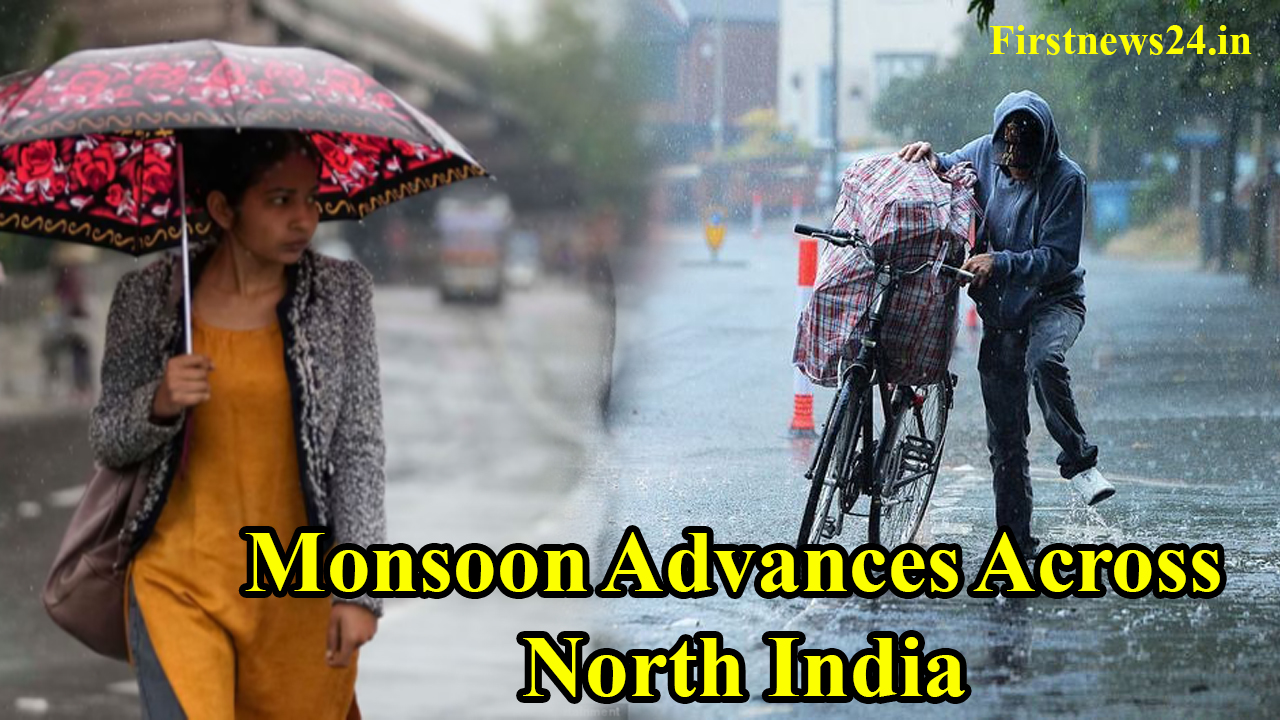The monsoon has made a promising advance across most parts of northern India, offering welcome relief from the intense summer heat. According to the India Meteorological Department (IMD), the southwest monsoon has now covered nearly all of northern India, with favorable conditions brewing over the northern Arabian Sea that could help it progress further.
In the coming days, the monsoon is expected to expand into more regions of Rajasthan, parts of Haryana, and the union territories of Chandigarh and Delhi. The IMD anticipates its arrival in western Uttar Pradesh, Himachal Pradesh, and Jammu within the next 48 hours.
As of Sunday, the monsoon had moved into significant portions of Himachal Pradesh and Jammu, enveloped all of Ladakh and Kashmir, and reached parts of Punjab — though it was still awaiting entry into Delhi and some western parts of Haryana. The northern boundary of the monsoon currently runs through key locations including Jaipur, Agra, Rampur, Dehradun, Shimla, Pathankot, and Jammu.
IMD: Monsoon Arrival Is a Positive Sign
Speaking on the latest developments, IMD Director General Mrutyunjay Mohapatra stated that the monsoon has reached most northern regions slightly ahead of schedule. “We’re still waiting for complete national coverage,” he said, noting that areas like Punjab, Haryana, Delhi, and parts of Rajasthan are yet to be fully brought under its influence.
Mohapatra added that the outlook for the coming days is optimistic, especially with the formation of a low-pressure system over southern Uttar Pradesh and Gangetic West Bengal — a development that tends to support enhanced monsoonal activity. “Such systems play a crucial role in pulling the monsoon currents deeper into the interior regions,” he explained.
How the Monsoon Typically Travels
By mid-June, the southwest monsoon usually spreads across most of Maharashtra (including Mumbai), Telangana, southern Chhattisgarh, and large parts of central India, Odisha, West Bengal, Sikkim, and eastern parts of Bihar and Jharkhand. From there, it gradually progresses northwestward.
By around June 20, it typically moves into Gujarat’s southern belt, the remaining stretches of Maharashtra, south-central Madhya Pradesh, and the rest of Odisha. Further penetration into northern and western territories occurs by the end of the month, covering Gujarat, Kutch, Madhya Pradesh, Uttar Pradesh, Uttarakhand, Ladakh, Jammu and Kashmir, Punjab, Haryana, Delhi, and eastern Rajasthan. The monsoon usually completes its reach across northwest India by early July.
A Head Start This Year, But Not Without Interruptions
In an unusual twist, this year’s monsoon made an early appearance in Kerala on May 24 — a full eight days ahead of schedule. It then swiftly moved up the western coast, soaking cities like Mumbai earlier than expected.
However, between May 29 and June 15, the monsoon’s progress stalled, leaving much of central and north India dry. Fortunately, post-June 15, the monsoon regained momentum and has since returned to its typical trajectory.
What Lies Ahead?
With forecasts pointing to favorable atmospheric conditions and a strong likelihood of consistent rainfall, regions still awaiting the monsoon can expect showers soon. The coming days may bring relief to millions, especially in agriculture-dependent states where timely rains are critical.
As the season continues to unfold, all eyes will be on how the monsoon sustains its pace and intensity — something that will significantly shape both rural livelihoods and urban life across India.
